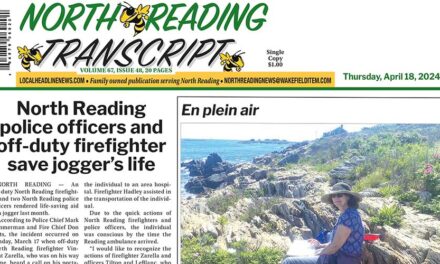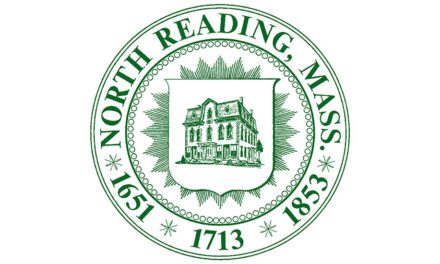Published in the March 31, 2016 edition
By BOB TUROSZ
NORTH READING – The presence of lead in water main delivery pipes is much in the news these days, after the troubling news from Flint, Mich. of high lead levels in drinking water supplies as well as some communities in New Jersey have elevated the issue to national prominence.
Recently, the Massachusetts Water Resource Agency (MWRA) announced it will make $100 million in funds available to member communities for the removal of lead pipes and the subject came up at a recent water workshop in town hall to discuss North Reading’s plans to join the MWRA for water supply by 2019.
In the question and answer period that followed the presentation, the question was asked whether bringing MWRA water into North Reading’s distribution system would have any effect on the town’s pipes, such as happened in Michigan. But Water Superintendent Mark Clark assured the audience that is not an area of concern.
Besides the fact that MWRA water meets or exceeds all federal and state standards, “North Reading does not have any lead water service lines,” Clark said publicly. The service line is what connects the house to the water main out in the street. Prior to 1960 North Reading had iron service lines and these are often the cause of low water pressure in some older homes, he said. After 1960 the town started using copper and the town doesn’t have any lead service lines.
“What happened in Flint, Mich. should not be happening in North Reading,” he said. A lot of homes have lead-soldered pipes in the home and North Reading and Andover currently treat to make the water less corrosive and so does the MWRA. Every three years the town tests the water in 30 homes that likely have lead soldered pipes and these results are reported and publicly disclosed.
In response to other questions, Clark said the Water Department currently has a staff of six employees and this will likely shrink to four if the town joins the MWRA. He said they hope this will come through attrition.
“We’re going to primarily be a distribution system” if the town joins the MWRA. For example, the town of Reading, which joined the MWRA, does not employ any water treatment employees, he said.
A question was also raised about the status of Swan Pond, which is of course located in North Reading but is not part of North Reading’s water supply. In fact, it is pumped once a year on a very limited basis by the town of Middleton, which secured the rights through the state Legislature over 100 years ago.
Clark said he gets this question a lot and he’s not all that sure about the history involved but the point is moot because Swan Pond has very limited water capacity and was never going to be a significant addition to North Reading’s water supply. In addition, it’s a surface water supply and all of the town’s water supply comes from groundwater.
“We don’t have a surface water treatment plant.” Such a treatment plant has completely different set of regulations in terms of staffing and treatment requirements than a groundwater plant. To build a treatment plant for Swan Pond, which is about a mile from the nearest water main would be prohibitively expensive and besides, the “safe yield” of water from Swan Pond (the amount that can be regularly be withdrawn from the pond) is “very, very low.”
Clark said he believes Middleton pumps from Swan Pond for about a month beginning in October and then the pond recharges over the winter. “Swan Pond is not the answer to North Reading’s needs,” he said.




